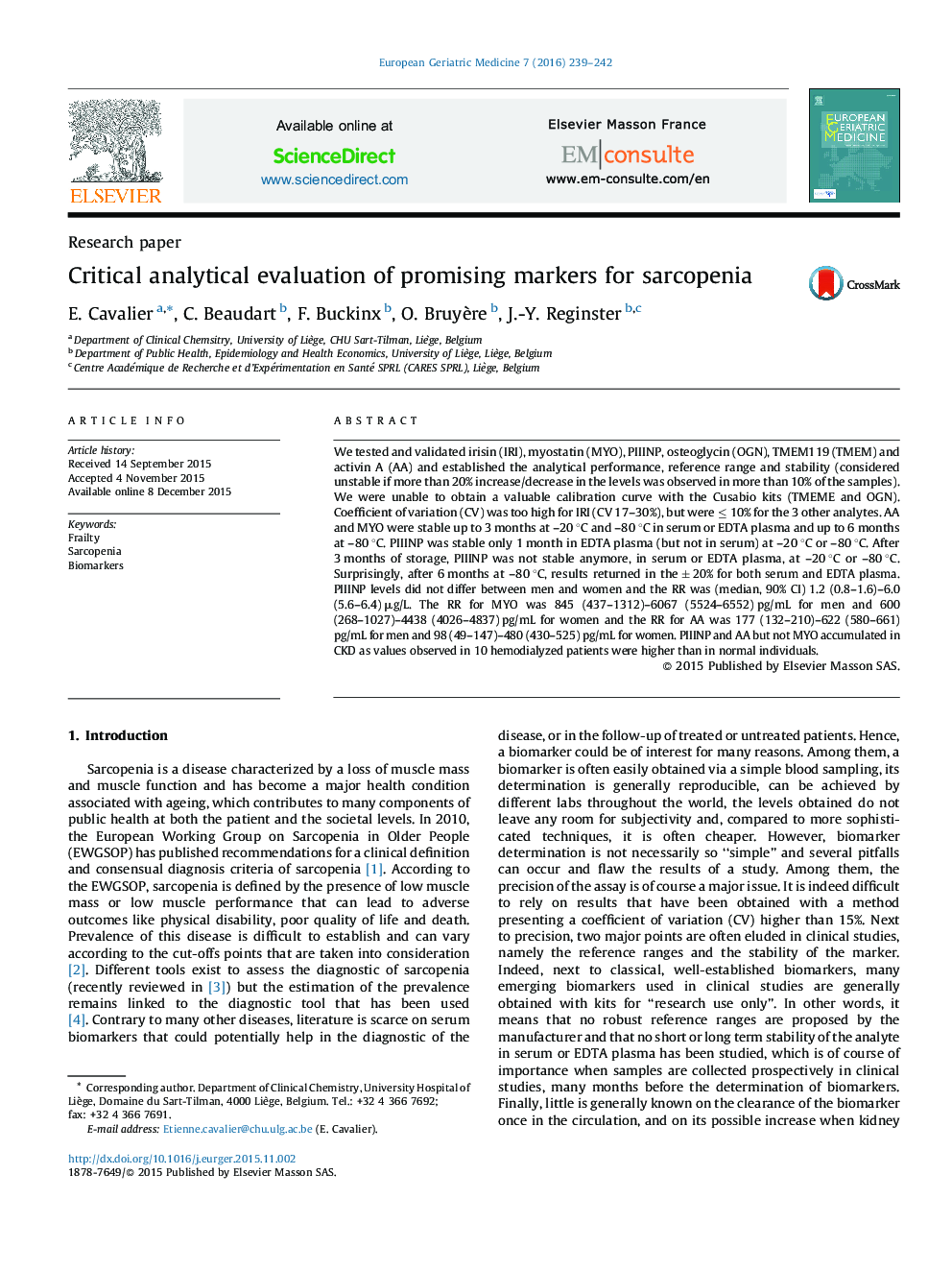| Article ID | Journal | Published Year | Pages | File Type |
|---|---|---|---|---|
| 3323825 | European Geriatric Medicine | 2016 | 4 Pages |
We tested and validated irisin (IRI), myostatin (MYO), PIIINP, osteoglycin (OGN), TMEM119 (TMEM) and activin A (AA) and established the analytical performance, reference range and stability (considered unstable if more than 20% increase/decrease in the levels was observed in more than 10% of the samples). We were unable to obtain a valuable calibration curve with the Cusabio kits (TMEME and OGN). Coefficient of variation (CV) was too high for IRI (CV 17–30%), but were ≤ 10% for the 3 other analytes. AA and MYO were stable up to 3 months at –20 °C and –80 °C in serum or EDTA plasma and up to 6 months at –80 °C. PIIINP was stable only 1 month in EDTA plasma (but not in serum) at –20 °C or –80 °C. After 3 months of storage, PIIINP was not stable anymore, in serum or EDTA plasma, at –20 °C or –80 °C. Surprisingly, after 6 months at –80 °C, results returned in the ± 20% for both serum and EDTA plasma. PIIINP levels did not differ between men and women and the RR was (median, 90% CI) 1.2 (0.8–1.6)–6.0 (5.6–6.4) μg/L. The RR for MYO was 845 (437–1312)–6067 (5524–6552) pg/mL for men and 600 (268–1027)–4438 (4026–4837) pg/mL for women and the RR for AA was 177 (132–210)–622 (580–661) pg/mL for men and 98 (49–147)–480 (430–525) pg/mL for women. PIIINP and AA but not MYO accumulated in CKD as values observed in 10 hemodialyzed patients were higher than in normal individuals.
